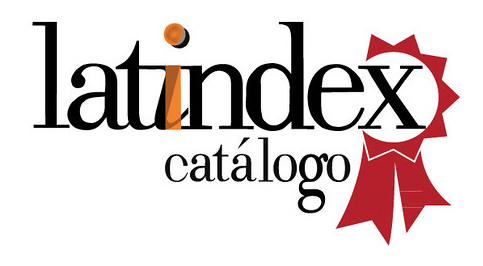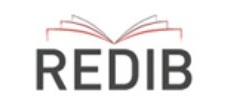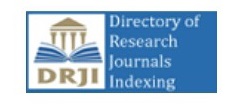Brick walls with plaster board coating: high performance, industrialized, robust and sustainable walls = abiquería de ladrillo con revestimiento de placa de yeso: paredes de altas prestaciones, industrializadas, robustas y sostenibles
DOI:
https://doi.org/10.20868/bma.2020.3.4674Keywords:
Plaster board, brick, acoustics, industrialization, Placa de yeso, ladrillo, acústica, IndustrializaciónAbstract
Abstract
Hispalyt focuses its work into improving ceramic construction systems, in order to offer high-quality, precision-engineered, efficient and sustainable walling systems. Bringing forward industrialization of ceramic partitions with high acoustic performance, Hispalyt has devel-oped SILENSIS-CERAPY solutions: brick walls with a plasterboard coating glued to the partition by using adhesive paste.
The combination of the brick structure and the plasterboard cladding, results into robust solutions with high acoustic performance. The system brings together the main advantages of ceramics (such as thermal inertia, fire resistance, robustness and security against robbery), with those of plasterboard, which leads to the improvement of the wall finishing and a fast track installation.
SILENSIS-CERAPY solutions are suitable to both new constructions and rehabilitation works, where an attempt should always be made to improve the acoustic conditions of the original building.
This article presents the tests and studies carried out for the characterization of SILENSIS-CERAPY solutions, as well as a summary of its technical performance, detail design and installation guidance.
Resumen
Hispalyt continúa con su labor de mejora de los sistemas constructivos cerámicos, con el fin de ofrecer al mercado soluciones de elevada calidad, eficientes, sostenibles y cada vez más tecnificadas. En este sentido, avanzando en la industrialización de la tabiquería cerámica de altas prestaciones acústicas, SILENSIS, ha desarrollado las soluciones CERAPY: paredes de ladrillo con revestimiento de placa de yeso adherida al tabique mediante pasta de agarre.
Al aunar en una solución SILENSIS-CERAPY la estructura de ladrillo y el revestimiento de la placa de yeso, se obtienen soluciones robus-tas, de altas prestaciones acústicas, que mantienen las características inherentes a los productos cerámicos, relativas a la inercia térmica, comportamiento frente al fuego, resistencia a cargas suspendidas y seguridad frente al intrusismo, al tiempo que se les suman las venta-jas constructivas de la tabiquería seca de las placas de yeso, mejorándose los rendimientos en obra y los acabados finales en obra.
Las soluciones SILENSIS-CERAPY se pueden aplicar tanto a obra nueva, como a obras de rehabilitación arquitectónica, en las cuales, en la medida que sea posible, siempre se debe tratar de mejorar las condiciones acústicas del edificio original.
En este artículo se presentan los ensayos y estudios realizados para la caracterización de las soluciones SILENSIS-CERAPY, así como un resumen de sus prestaciones técnicas, disposiciones constructivas y proceso de ejecución
Downloads
References
Ministerio de Fomento. Documento Básico de Protección frente al ruido (DB HR) del Código Técnico de la Edificación (CTE).
E. Santiago, A. Ribas, J. Valenciano. (2016) Nuevos revestimientos de placa de yeso para las paredes de ladrillo Silensis. Cursos Avanzados Eduardo Torroja.
P. Linares, V. Sánchez, A. Ribas, Manual de ejecución de fábricas de ladrillo para revestir. Toledo, España: Asociación Regional de Fabricantes de Tejas y Ladrillos de Castilla La Mancha. Disponible en https://www.silensis.es/informacion-tecnica/manual-ejecucion-silensis.
Ipsos-ASI. The Advertising Research Company. (2007) Barómetro sobre la cali-dad de la vivienda. Disponible en https://www.hispalyt.es/show_doc.asp?id_doc=3218.
Downloads
Published
Issue
Section
License
The originals of Building & Management magazine are property of the Universidad Politécnica de Madrid, being necessary to cite the origin of any partial or total reproduction.
All the original articles published in Building & Management are subject to discussion and comments from our readers. Opinions should be sent to the journal's email address, within a period of three months, starting from the date of publication.
Authors retain the copyright of the papers and ensure B&M the right to have a Creative Commons license, Attribution-NonCommercial-NoDerivatives 4.0 International (CC BY-NC-ND 4.0), that allow others to share the article within an author recognition and non commercial use.
Authors can also establish independently aditional agreements for the not exclusive distribution of the article published versión in the e-journal (as, for example, to place it in an institutional repository or to publish it in a book).
Unless otherwise indicated, all contents of the electronic edition of Building & Management are distributed under a Creative Commons license and distribution.




 <
< 








